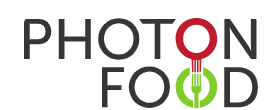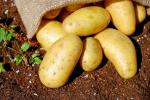
CDTI Project: PHOTONFOOD
- Type Project
- Status Filled
- Execution 2022 -2025
- Assigned Budget 4.965.623,75 €
- Scope Europeo
- Autonomous community Cataluña
- Main source of financing CDTI
- Project website PHOTONFOOD
During its implementation, the PHOTONFOOD project developed and validated a novel photonic solution for the detection of microbial and chemical contaminants in food throughout the entire production chain.
By combining mid-infrared (MIR) sensing, smart paper-based microfluidics, and advanced data analytics, the project delivered two portable devices: the MI-FI (Mid-Fidelity) for low-cost daily monitoring, and the HI-FI (High-Fidelity) for accredited reference analysis. These tools were tested under real-world conditions, demonstrating their usability, reliability, and potential to reduce reliance on laborious laboratory testing.
Flexible mid-infrared photonic solutions for rapid detection of food contaminants from farm to fork
Analytical techniques for measuring chemical and microbial contamination throughout the food chain require detection levels in the ppb range. Direct measurement of contaminants at these concentrations in a food matrix is not possible using any photonic principle. PHOTONFOOD seeks to overcome this barrier by developing an integrated solution that combines innovations in intelligent paper-based sample processing, mid-infrared (MIR) detection, and advanced data analysis.
Mid-infrared (MIR) spectroscopy has proven to be the most reliable and widely applied spectroscopic method for the detection, characterization, and quantification of chemical and microbial contamination. To transform MIR detection from existing laboratory-based solutions into a portable solution for widespread use in the food chain, PHTONFOOD is seeking to develop new infrared light sources, specifically interband cascade light-emitting diodes (IC-LEDs) and interband and quantum cascade lasers (ICL/QCLs). The light sources will be combined with sophisticated waveguide and 3D paper microfluidics technology.
The project will develop a solution consisting of: (1) a medium-fidelity (MI-FI) device with an expected low price range that can be used for daily monitoring, and (2) a mid-price range high-fidelity (HI-FI) device for reference analysis and accreditation. The solution will be validated and demonstrated in real-life scenarios for fungal and aquatic mold (oomycete) contamination, mycotoxins in wheat, nuts, dried fruits, and aquaponic herbs, as well as pesticides and antibiotics in aquaponic herbs.
The research will be conducted by a highly recognized, multidisciplinary research team in collaboration with leading mycotoxin testing laboratories, an aquaponics farm, a dry food distributor, and farms with on-site food processing and sales. Strategies will be developed to transfer the data obtained and integrate it into data platforms to track food contamination, improve food quality, and reduce waste.
The PHOTONFOOD project directly contributed to key EU objectives, such as the Farm to Fork Strategy, the European Green Deal, and the Digital Europe Programme, by providing practical and sustainable tools for contamination detection. Having achieved Technology Readiness Level 6 for MI-FI and HI-FI devices, the project demonstrated that rapid, cost-effective, and portable solutions can complement or replace traditional laboratory methods.
Looking ahead, the consortium encourages continued investment in photonic innovations, increased regulatory support for their adoption, and closer collaboration with stakeholders to improve food safety, traceability, and resilience throughout the European food chain.
The overall objective of the PHOTONFOOD project is to research the application of photonic technologies in the agri-food supply chain to address the major challenges facing society, such as supplying food to a growing population with efficient use of resources, reducing losses and waste, improving food quality and safety, as well as transparency in the supply chain, and promoting technological development in this sector to improve its positioning and competitiveness for export.
Contact person: Professor Achim Kohler (Norwegian University of Life Sciences (NMBU))
Email: achim.kohler@nmbu.no
- UNIVERSIDAD BIOVITENSKAPLIGE DE NORGES MILJO-OG
- UNIVERSITAET ULM
- UNIVERSITAET FUER BODENKULTUR WIEN
- UNIVERSIDAD DE WAGENINGEN
- NEMZETI ELELMISZERLANC-BIZTONSAGI HIVATAL
- NANOPLUS NANOSYSTEMS AND TECHNOLOGIES GMBH
- DIVISIÓN DE ROMER LABS HOLDING GMBH
- IRIS TECHNOLOGY SOLUTIONS, SOCIEDAD LIMITADA
- ACCELOPMENT SCHWEIZ AG
- BUILDING INTEGRATED GREENHOUSES
- SEEBERGER GMBH
- BAMA GRUPPEN AS
- HAHN-SCHICKARD-GESELLSCHAFT FUR ANGEWANDTE FORSCHUNG EV
- NANOPLUS ADVANCED PHOTONICS GERBRUNN GMBH







